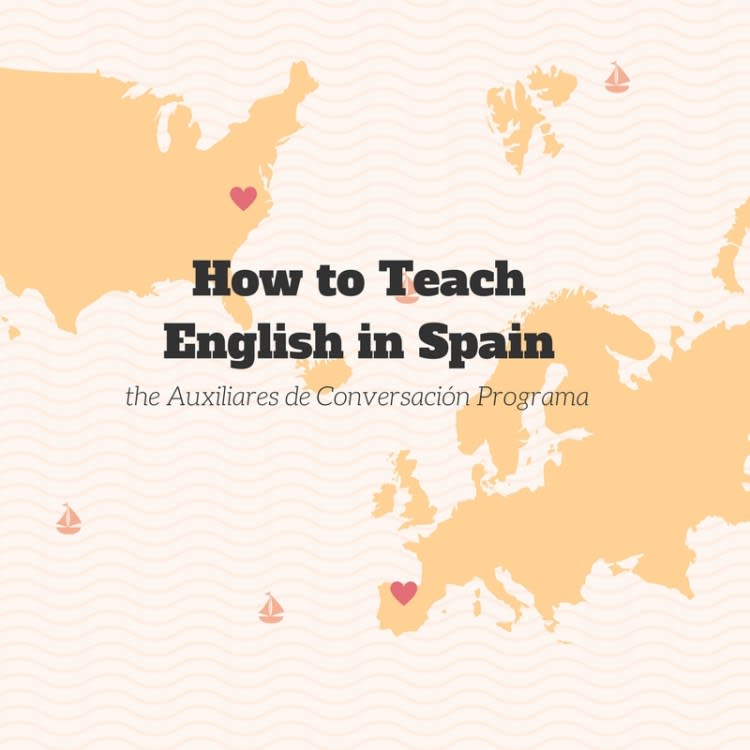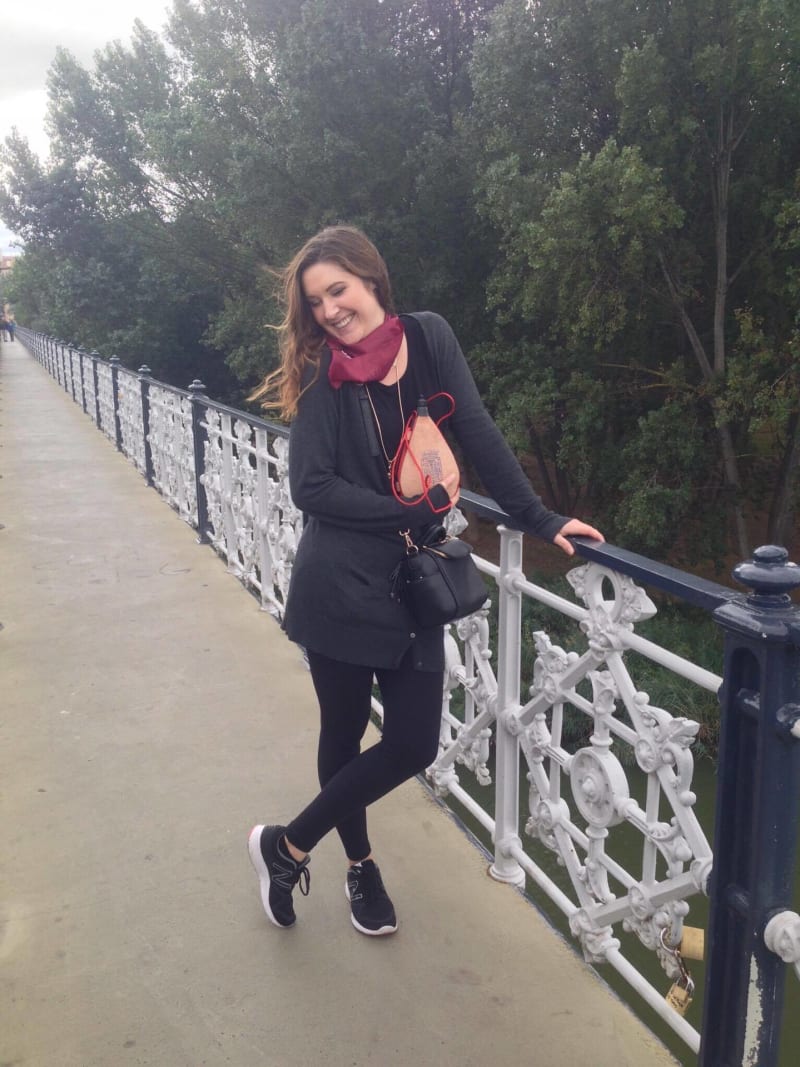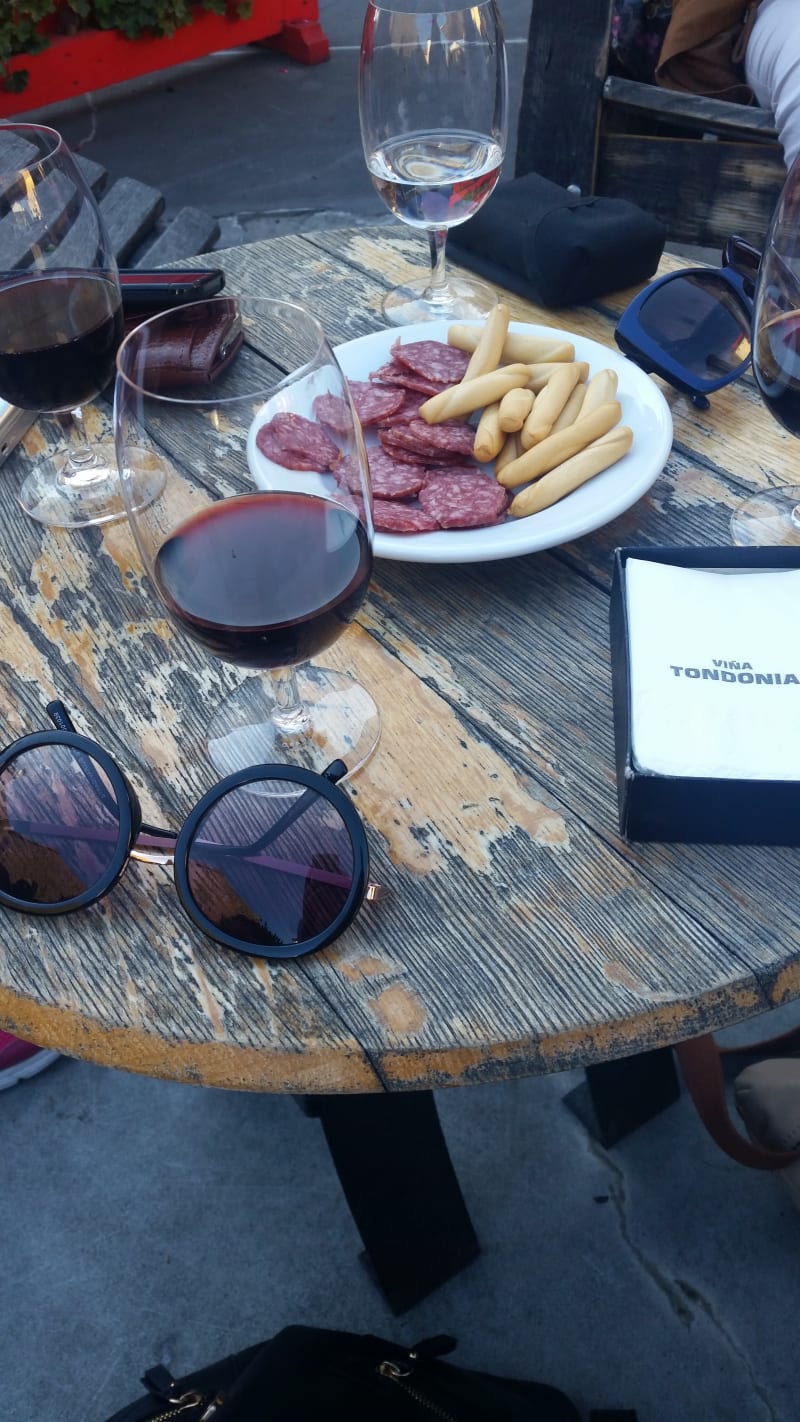
Applying for the Auxiliares de Conversación Programa in Spain
January 13 2017
My Experience and A Few Questions Answered
In light of the application process recently opening back up for the program I am doing in Spain, I thought I would share my past experience and application process. Though it might be the same for many, keep in mind that this is my experience and perceived thoughts and will vary for others.
I heard about the program from my sister, who heard it from a friend, who did it for a year. Word of mouth in the extreme.
And then I ran into an old soccer teammate at the movies one night, and she mentioned the program as well. I had never heard of it in my life, and even in the last three months when I had been researching anything to do with working/studying abroad.
The North American Language and Culture Assistants in Spain, or the Auxiliares de Conversación Programa.
The program helps to bring native English speakers into the schools throughout Spain, and in return for your native tongue and twelve hours of work a week, they will pay you 700 euro a month (900 if you are working out of Madrid.) It is an 8 month program, October 1st to May 31st, or for Madrid, 9 months, October 1st to June 30th.
But let’s do a breakdown.

What do you have to do?
You have to apply. The application process can be a wee bit overwhelming, but it is, by no means, impossible. Fill out the application, get your reference letter, upload a picture of that fabulous college diploma, and anxiously await the moment that the application process opens. Which this year was January 9th, 2017 at midnight.
How do you choose where you get placed?
You don’t. You have the opportunity to list your top three regions in your application- but that’s as specific as you can get. Also, you can write out your preferences for levels of education to teach (primary, secondary, adults.) Regional wise, you can specify whether you would be comfortable in a city, small urban area, or countryside.
But like all great things, it’s the luck of the draw. And what number your application is. You might get number 200, which is insanely low, but 2nd year renewals get first dibs, so even though you’re low on the number scale and picked Andalucía, there is still a chance you won’t get it. If enough 2nd years choose to remain the region, your number is bumped.
For 2016, I choose 1) Aragon 2) La Rioja 3) Andalucía. I was number 1,576 and I was placed in La Rioja. I asked for primary level, and received it. And wanted to be placed in a small urban area, and am now currently residing in Calahorra, though my school is in a small pueblo called Arnedo.
When do you apply?
January. On the dot. Stalk the website and get your application in ASAP. I submitted mine about two weeks after the opening. This year, just over 5,000 people were placed throughout Spain. So even though I feared my number was extremely high, there were far larger ones who received a placement.
Can you live on that kind of money?
Yes, absolutely. That being said, the initial settling in process will take some savings. Another blogger described it as ‘investing in yourself,’ and that’s what this is. You will have to put money down to make this experience happen.
The visa process can add up to just under $200 after obtaining your background check and any additional paperwork. (The visa itself is $160.) If you have to obtain a passport, that will set you back another ~$100. Flights over here range, but mine was around $500 one way. I arrived in early September with the knowledge that I wouldn’t get paid till the end of October, and that is only if everyone gets their payment information and TIE application proof in on time.
Be prepared to live off your savings for at least three months.
Cost of living over here is very inexpensive, though of course budgeting is still a must. An average week of groceries can add up to around 20-30 euro’s (if you’re like me, buying wine is a necessity.) A drink out will cost anywhere from .80 to 2 euros. Food ranges in what you get, but it’s easy to spend under 10 euro for a good amount.
Private lessons can also really help with additional cash flow. The running rate is 15 euro an hour for one student. 20 for two, and five additional euro for every person/hour after that.
My rent is just under 250 euro, and I do private lessons every other week- which means at the end of the month, I’ve essentially earned back my rent.

What’s frustrating?
You must find housing and transportation for yourself. Though sometimes teachers at your schools may assist with providing or referring you to a carpool.
Finding housing can be both the easiest experience, or the most complicated. It all depends where you are placed and what time of year it is. I arrived in Logrono under the impression that finding housing would be a breeze. I searched for ten days and found nothing that was well-suited to my needs. My first trip to Calahorra and a few connections through friends, I had a great piso that very day.
That being said, I know plenty of people who had no problem finding a place to live, whereas I was on the flip-side of that and really struggled.
Not being able to obtain a ton of information/ know my schedule far ahead of time. One of my schools was very on top of it and was able to provide me my schedule over a week before I started at the school.
Not getting paid on time. There are horror stories all over the place, but the short of it is, not getting paid is the nature of the beast. And the beast can sometimes suck.
Not knowing Spanish. Of course, basic intelligence calls this one into question, but the application never alluded to the all-consuming necessity of speaking Spanish. It makes things a hundred times easier. So if you’re coming over here, speak Spanish. I really wish I had taken learning the language more seriously before I showed up. And though I did survive, it rocked my confidence when I really needed to be strong.
In Reflection
Having now been here for the better part of 4 months, I can say that I wouldn’t go back on my decision to do this program. Yes, some days your kids will drive you up a wall, or your bus will be fifteen minutes late, or you’ll sit in a room full of teachers talking loudly in Spanish and simply give up on trying to keep up. But that’s life. And at least you get to experience all of that while living in Spain.
Even though I live very far away from a major airport, I still make it a point to travel. And I do that on a small salary. Even though I am emptying my savings account instead of contributing to it, I reckon there will never be another time in my life when I’ll get to be here, able to hop on a plane and be in another country in 2 hours.
And that, my friends, is awesome.
My Timeline
January 12th- Completed application and mailed in documents. Here’s the website for reference.
January 17th- Inscripción solicitud- received number 1,579 in the application process. (I was a week late submitting.)
January 28th- Registro de solicitud and Solicitud admitida- aka they received my things and my application has been accepted.
May 18th- Adjudicacion de plaza- finally got placed! Placements began to roll out the very beginning of May, and so I was keeping a close eye on the page that they updated each day. They placed on average 200-400 a day, so my expectations were met.
May 18th- I accepted my placement at La Rioja!!! After months of waiting, it was such a relief to finally begin planning my life.
May 20th- I went and got my passport pictures taken at Costco down the road. I already had my passport that is two years old ready to go, though.
May 31st- Received an email from La Rioja providing my Carta electronically and providing me with my schools. They asked that I email them to confirm I was accepting this placement. I did.
June 1st- Begin the visa application. I had been doing research for months leading up to this, and had a little confusion on the date, 90 day thing, but this was when I began to lay out my schedule for obtaining all my necessary paperwork.
June 14th- I mailed out my State Back ground check to Richmond.
June 23rd- I had my physical and was able to get the documents in both English and Spanish back that day.
June 28th- I bought my ticket to Madrid. My flight date is Sep. 8th arriving on the 9th to beat the San Mateo festival traffic and settle in, maybe do some traveling.
June 29th- I got my State Background check back. (took 15 days)
June 30th- I completed all my paperwork outside of getting my background check Apostilled.
July 1st- I email my school asking a few questions about past Auxiliers, living situation, commuting options, and further introducing myself.
July 6th- Sent in my Background check with cover letter to get the Apostille of the Hague. Turn around is supposed to be up to 5 business days.
July 15th- Go my background check back with the Apostille of the Hague.
July 18th- Applied for Visa in Dupont Circle in D.C. They said come back in 5 weeks on the dot. *Don’t dress up. I showed up in a pencil skirt and blouse (sweating like a pig actually) and stared at envy in the girl in Yoga shorts, and another in a white tank and short shorts. This isn’t your typical sit down and hash it out, you stand behind a counter and literally they check your papers, hand you a receipt, and send you on your way. #newtothevisaprocess
July 25th- I put in my ‘2 weeks’ (really 5) at my job.
August 15th- 5 weeks is up. I picked up my Visa.
August 26th- I officially left my job of two years to give myself a cushion of time to get things in order.
September 8-9th- Adios, America, Hola España. Took a flight from Dulles to Boston, Boston across the Atlantic to Madrid.